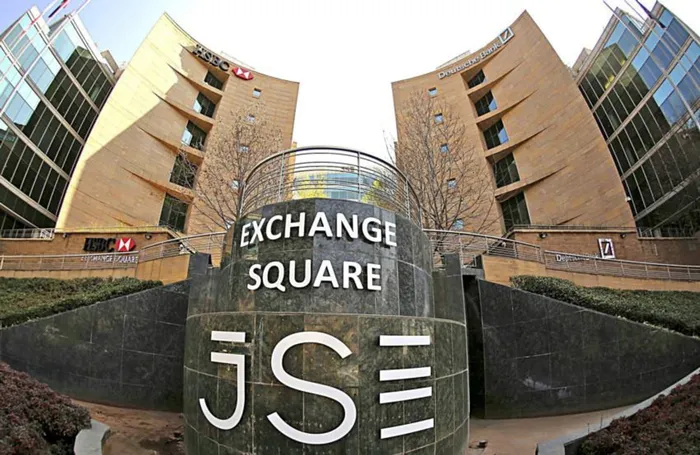Despite turmoil on the global markets, the JSE ends March and first quarter on a positve note
OPINION

South African equity markets ended the first quarter on a positive note.
Image: Photo: Siphiwe Sibeko/Reuters
South African equity markets ended the first quarter on a positive note with the FTSE/JSE Capped SWIX Index up 3.6% month on month (m/m) and up 5.9% year to date (YTD) despite turmoil in global equity markets.
Unfortunately, the positive numbers at the index level masked divergent underlying trends, with exceptional performances from the gold (up 33% m/m/ up 68% YTD) and platinum miners (up 40% m/m/+37% YTD), but the remainder of the index constituents delivering negative performances in aggregate m/m and YTD.
The gold price, which was up 9% m/m and 19% YTD) reached $3 000 (R54 000) an ounce during March, having been as low as $1 800/oz less than 18 months ago, while platinum group metals (PGMs) had a strong March, particularly rhodium that rose 21% m/m.
Standard Bank rose 10% m/m and was amongst the individual counters outside of precious metals miners on the JSE to defy the general gloom, reporting a 4% year on year (y/y) increase in headline earnings per share (eps) - in line with expectations - but surprising investors positively with guidance for 12% eps growth from 2026 to 2028.
Sun International was up 9% m/m and reported earnings growth of 3% y/y for 2024, but with 60% y/y growth in online gambling revenue, an area it will continue to focus on as it brings in its new Swedish CEO, Ulrik Bengsston, who has extensive online gambling experience.
Education stock, Curro, was amongst the local bourse’s most disappointing performers in March, down 28% m/m as it released results which showed the company still operating at suboptimal occupancy (72%) and slowing enrolment levels. MAS was another disappointment, down 19% m/m, as its latest earnings announcement was accompanied by news that it remains unable to reach an agreement to unwind its complex and challenging relationship with developer PKF.
South African core inflation, up 3.4% y/y came in below expectations at 3.5% y/y as price growth continued to slow towards the lower band of the target range of the SA Reserve Bank (SARB) (3%-6% per annum). Despite subdued inflation, the SARB kept the SA benchmark interest rate unchanged (7.5% a year), leaving the country’s prime lending rate (11% per annum) roughly 1.5% above its 15-year average.
The SA government’s 10-year borrowing rate was also unchanged for the month, up 10.6% a year, with the US 10-year borrowing rate of 4.2% per annum, similarly unchanged for March. The local currency strengthened against a generally weak US currency in March, up 2% m/m and up 2.8%.
Global insight
Developed market equities recorded their second consecutive monthly fall with the MSCI World down 4.4% m/m, pushing them into negative territory for the first quarter 2025 and down 1.7% quarter on quarter.
US mega cap tech stocks were amongst the worst-performing cohort, with the Bloomberg Magnificent Seven Index falling 10.2% m/m in March to leave it down 16% YTD. Tariffs continued to weigh on investor sentiment as March started with confirmation that US President Donald Trump would push ahead with tariffs on Canadian and Mexican imports. A day later, Trump announced a 10% increment to tariffs on Chinese imports (in addition to the 10% increase announced in February), and later in March came the announcement of a 25% tariff on $240 billion (R4.3 trillion) of vehicles imported into the US annually.
Investors ended the month anticipating further tariff announcements on April 2, which Trump has dubbed “Liberation Day”, with a raft of reciprocal tariffs on US trading partners anticipated. Investors appear increasingly concerned by Trump’s apparent willingness to stomach economic weakness en route to achieving his policy agenda as he suggested that his economic policy is likely to cause a “period of transition for the US economy”.
European bourses with the Eurostoxx 50 flat m/m in US dollar terms outperforming their tech-heavy, US-listed counterparts (S&P 500 down 5.6% m/m) for the fourth consecutive month. Value stocks (MSCI World Value Index -1.3% m/m/+4.8% YTD) once again outperformed their faster-growing peers (MSCI World Growth Index -7.5% m/m/-7.8% YTD), having underperformed that cohort by around 50% over the past two calendar years.
Emerging market (EM) stocks fared significantly better than their development market counterparts (MSCI EM +0.5% m/m) as Chinese stocks continued to recover from depressed levels on improving prospects for much-needed economic and policy support from the Chinese government. Hong Kong-listed Chinese corporates (Hang Seng China Enterprises +1.2% m/m) are now up 17.6% YTD. Indian stocks (Nifty 50 +6.3% m/m), as well as stocks listed in Brazil (Bovespa +6.1% m/m), also contributed to the strong EM stock market performance in March.
Despite increasing concerns around US economic growth, the US 10-year government borrowing rate ended the month unchanged at 4.2% per annum as investors worried that the US Federal Reserve (Fed) could struggle to meaningfully cut interest rates to support economic growth if tariffs were stoking inflation. After a strong start to the year, the US dollar fell against most major currencies for the second consecutive month (US Dollar Index -3.2% m/m/-2.1% YTD).

Peter Little is a fund manager at Anchor Capital.
Image: Supplied
Peter Little is a fund manager at Anchor Capital.
** The views expressed here do not necessarily represent those of Independent Media or IOL.
BUSINESS REPORT
Related Topics: